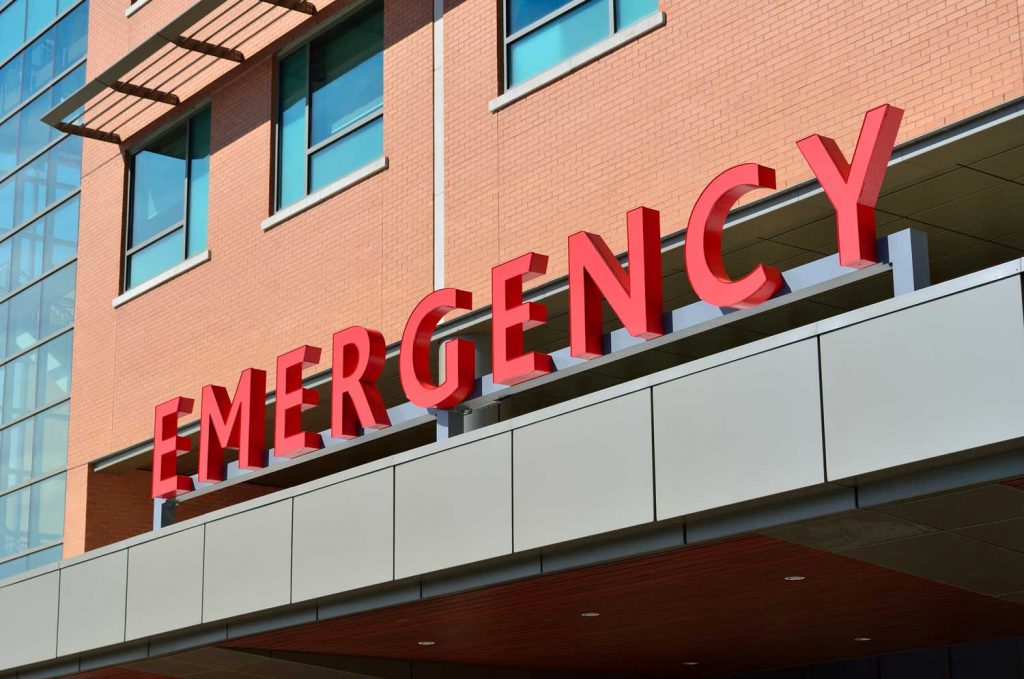Our CEO, Dr. Charu Raheja recently presented at the Worksite Wellness Academy at the National Wellness Institute Conference. She shared her personal health journey and related to how busy executives and highly productive employees can often ignore serious health symptoms.
When deciding on a course of action for any particular patient, triage nurses need to consider many elements. Each individual has their own risk factors – age, lifestyle, chronic illnesses, surgeries, medications, and more – which need to be considered before deciding if the emergency room is the appropriate place for treatment. It is important to recommend the appropriate level of care for each person’s individual needs.
Below are the five major reasons why telephone triage nurses send adults to the ER.
Difficulty Breathing
Shortness of breath and wheezing can be frightening. For some people, though, this is their normal breathing pattern; nurses must remain calm and assess the severity of the patient’s breathing. This is done by asking the patient what their baseline is and, importantly, how it is different at the time of the call.
Some criteria that will lead the nurse to advise an ER visit are:
- New or worsening moderate shortness of breath
- Bleeding or clotting issues, including patient history of clots in the legs or lungs, recent major surgeries, recent bouts of prolonged sitting such as long-distance travel, or recent prolonged bedrest due to other illness
- Irregular heartbeat
- Additional symptoms that occur alongside the difficulty breathing, such as chest pain or sudden and extreme fatigue
- Chronic illnesses like asthma, COPD, or congestive heart failure where shortness of breath has become worse
Abdominal Pain
Many things cause abdominal pain, especially in patients with ovaries or a uterus. Because of the myriad potential causes and how common abdominal pain is as a symptom, triage nurses must be thorough when performing the assessment. Causes run the gamut from simple overeating to life-threatening ruptures. The location of the pain gives clues to what might be causing the problem. For example, on the right side of the body, upper quadrant pain can indicate a problem with the gallbladder or the liver, while lower quadrant pain could be the appendix, kidney, or ovary.
Among the various possibilities, the following symptoms might indicate the need for an ER visit:
- Severe pain in patients over 60 years old, especially an 8 and up on a 10-point pain scale
- Excruciating pain that persists over an hour
- Vomit that looks like coffee grounds or contains red blood
- Bowel movements that appear tarry or black
Chest Pain
When people imagine why they might need to visit an ER, chest pain is often a symptom they mention. In truth, it can be caused by both benign and life threatening problems. A triage nurse who hears a patient mention chest pain will go through the ABCs that, if also experiencing symptoms, indicate a more severe condition: the patient’s Airway, Breathing, and Circulation. After ensuring that the ABCs are fine, the triage nurse will use the protocols to decide if a patient needs to go to the emergency room.
These symptoms suggest a need for an ER visit:
- Pain that radiates to the shoulder, arm, or jaw
- Crushing, heavy pressure that lasts over 5 minutes
- Recent major surgery in the last month
- Pain that is not relieved by nitroglycerin, which is such a severe symptom that the patient should call 911 immediately
Back Pain
Like abdominal pain, back pain is a common symptom with many root causes. Over 80% of people will experience it in their lives. Most of the time, it is not serious and will subside within a few months. However, especially in adults, it could be the sign of something more serious: compression fractures, kidney stones, aortic aneurysms, and nerve root impingement all cause back pain. Due to how common back pain is, triage nurses need to ensure thoroughness in determining the cause and severity.
If the following symptoms are present, the patient may need to be seen at the ER:
- Sudden onset excruciating pain in patients over 60 years old
- New urinary or bowel incontinence
- Severe pain that does not respond within 2 hours of being given pain medication
Post-Operative Concerns
Surgery and other operations can cause lingering symptoms afterward. The anesthesia may cause minor reactions like drowsiness, nausea, and vomiting. The operation itself might cause constipation, bleeding, or blood clots. However, sometimes serious problems arise like infections and dehiscence, which is when the incision reopens.
Symptoms that tell the nurse that the patient needs emergency room care include:
- Bleeding from incision that does not stop after attempting home care
- Fever, accompanied by signs of infection around the incision, particularly if the patient cannot be seen in their provider’s office within 4 hours
- Severe incision pain, rated an 8 or above on a 10-point pain scale
- Widespread bright red rash which resembles sunburn
Even when adults have a sense that their symptom may be serious, there is a stigma of calling for an ambulance. Fortunately, having a triage nurse available increases the chances that a patient will seek help from a professional. Patients often will call a triage nurse when they are not sure about their symptoms because nurses provide an empathetic ear and support even if it is just a health question or a non-serious issue. As a result, this allows the nurse to triage a patient and catch serious symptoms that require immediate attention.
Check out our Learning Center for more free educational materials for telephone triage nurses and medical professionals.
If you would like to know more about how telephone triage nurses can help your practice improve patient care Contact Us today.





